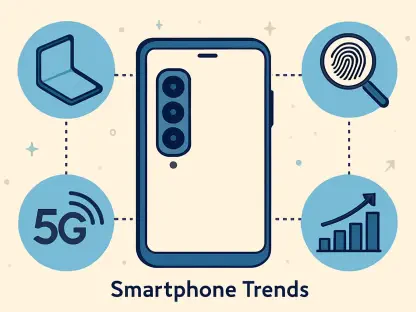In the realm of mobile technology and app development, few come as well-versed as Nia Christair. With her extensive experience in mobile gaming, app design, and enterprise solutions, she brings a depth of understanding to the complex issues surrounding apps like Tea, which recently faced a significant data breach. This engaging conversation with Nia explores the implications of the breach and delves into broader cybersecurity topics relevant in today’s digital age.
Can you give us an overview of what the Tea app is and what its main purpose is?
Tea is designed as a ‘dating safety tool’, specifically aimed at protecting women. Its primary function is to provide background checks on men, including any criminal records or if they’re registered sex offenders. It also offers reverse image searching to help identify catfishing incidents, which remains a significant concern in the online dating world.
When was the Tea app launched, and what specific dating issues does it aim to address?
The app launched in 2023 and quickly rose in popularity due to its unique proposition of safety in dating. It targets issues like verifying a person’s identity to prevent catfishing, and empowers users by disclosing potential partners’ backgrounds, which enhances safety considerably in the online dating environment.
Can you explain the recent data breach that the Tea app experienced?
Sure. Recently, Tea disclosed a significant data breach where an unauthorized party accessed 72,000 images. This breach is alarming as it potentially affects the privacy of users whose images, including photo IDs and selfies, were leaked. The security lapse has instigated a thorough investigation and immediate action to reinforce data security practices.
How many images were involved in the breach, and what types of images were they?
There were a total of 72,000 images involved, comprising 13,000 containing self-portraits and official identification documents provided during the account verification process. The remaining 59,000 images were submitted by users in a more public context, such as posts or direct messages on the platform.
What period of users does the data breach affect?
The breach specifically affects users who joined Tea before February 2024. Anyone who signed up on or after this date should be unaffected, as their data isn’t included in the compromised archived system.
How were the accessed images stored, and why was this method chosen?
These images were stored on an archived data system in compliance with certain cyberbullying prevention laws. This choice highlights the balance apps need to maintain between complying with legal responsibilities and safeguarding user data.
Are there any indications of who might be responsible for the breach?
While the investigation is ongoing, there are suggestions that the breach may be linked to activity on 4chan, where it seems a user provided access to download this database. This association, however, remains speculative pending further investigation.
What is the connection between the data breach and 4chan?
The connection is primarily speculative at this point, with reports of 4chan users allegedly hosting downloads for these breached images. This underscores the challenges in tracking the digital trail and holding accountable the parties responsible for data breaches.
How is Tea responding to the breach in terms of investigation and collaboration with law enforcement?
Tea is actively collaborating with external cybersecurity experts and has also notified law enforcement agencies in the U.S. to thoroughly investigate the matter. They are committed to uncovering all details and ensuring such a breach does not recur.
Are there any risks of personal data being exposed beyond images?
According to Tea, no personal data like email addresses or phone numbers was accessed—only images. However, the nature of the images involved could still pose risks such as identity theft, especially with the compromised official IDs.
Could you explain the potential risks to users from the exposed images, especially regarding identity theft?
The primary risk is identity theft, given that some compromised images include official photo IDs. This sensitive data could potentially enable malicious actors to impersonate users or engage in fraudulent activities under their names.
What measures has Tea implemented to enhance data security after the breach?
Post-breach, Tea has prioritized enhancing security protocols by employing stricter access controls, rigorous data encryption practices, and comprehensive monitoring solutions to prevent unauthorized access and safeguard user data.
How can users determine if they were affected by the breach, and what are the recommended steps they should take?
Users can check whether they joined Tea before February 2024. If so, they should monitor their bank accounts and credit statements for irregularities as an early line of defense against fraud. Increased vigilance in digital activity is advisable thereafter.
What actions can affected users take to protect themselves from identity theft?
Affected users are advised to engage in regular financial monitoring and consider enrolling in free credit monitoring services, which can alert them to suspicious activities. This may involve spotting unauthorized inquiries or changes in their credit report.
Can you discuss the changes Tea made regarding ID requirements during the sign-up process?
Aware of the risks, Tea stopped requiring official IDs for the sign-up process back in 2023. This change was intended to ease privacy concerns while still maintaining a robust verification process that protects users from scams and fake profiles.
What’s the significance of credit monitoring services in relation to data breaches?
Credit monitoring services play a critical role in identifying unauthorized use of personal data quickly. They monitor for any suspicious activity linked to someone’s credit profile and alert individuals to potential identity theft situations.
How is Tea planning to regain user trust following this security incident?
Tea is committed to transparency by communicating openly with affected users and implementing stringent security measures. They intend to regain trust through diligent protection of user data and by continually refining the app to ensure a safe user experience.
Do you have any advice for our readers?
Vigilance is key in today’s digital world. Regularly updating security settings, using strong, unique passwords, and monitoring financial statements are small steps that can make a big difference in protecting personal information online.









